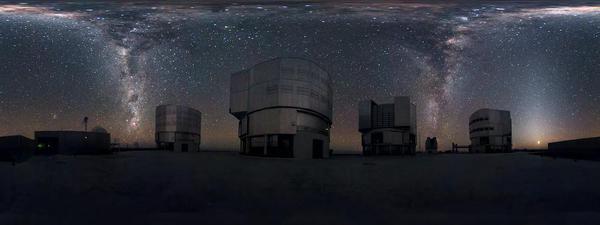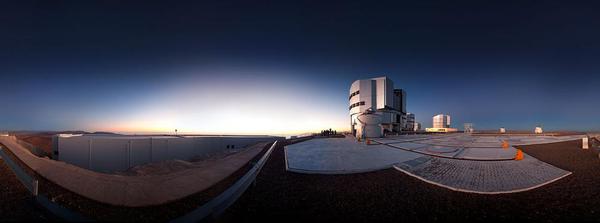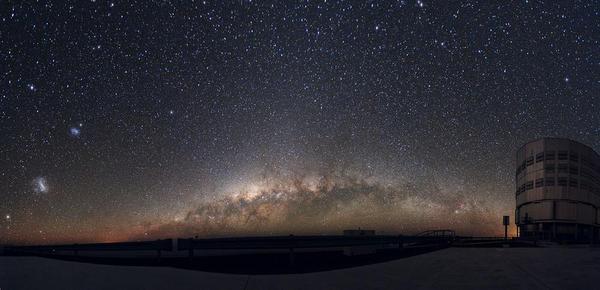
The Paranal Basecamp from above
The Paranal Basecamp from above
Looking down from a vantage point at the ESO Very Large Telescope on Cerro Paranal in the Chilean Atacama Desert, the observatory’s basecamp stretches out below. The Paranal Residencia, a haven for those working on the mountain, can be seen near the centre with the dome on its roof. To the left of the Residencia, on the other side of the road, is the basecamp’s gymnasium, and to the left of that is the Mirror Maintenance Building (MMB), where the giant VLT mirror
Looking down from a vantage point at the ESO Very Large Telescope on Cerro Paranal in the Chilean Atacama Desert, the observatory’s basecamp stretches out below. The Paranal Residencia, a haven for those working on the mountain, can be seen near the centre with the dome on its roof. To the left of the Residencia, on the other side of the road, is the basecamp’s gymnasium, and to the left of that is the Mirror Maintenance Building (MMB), where the giant VLT mirror
























